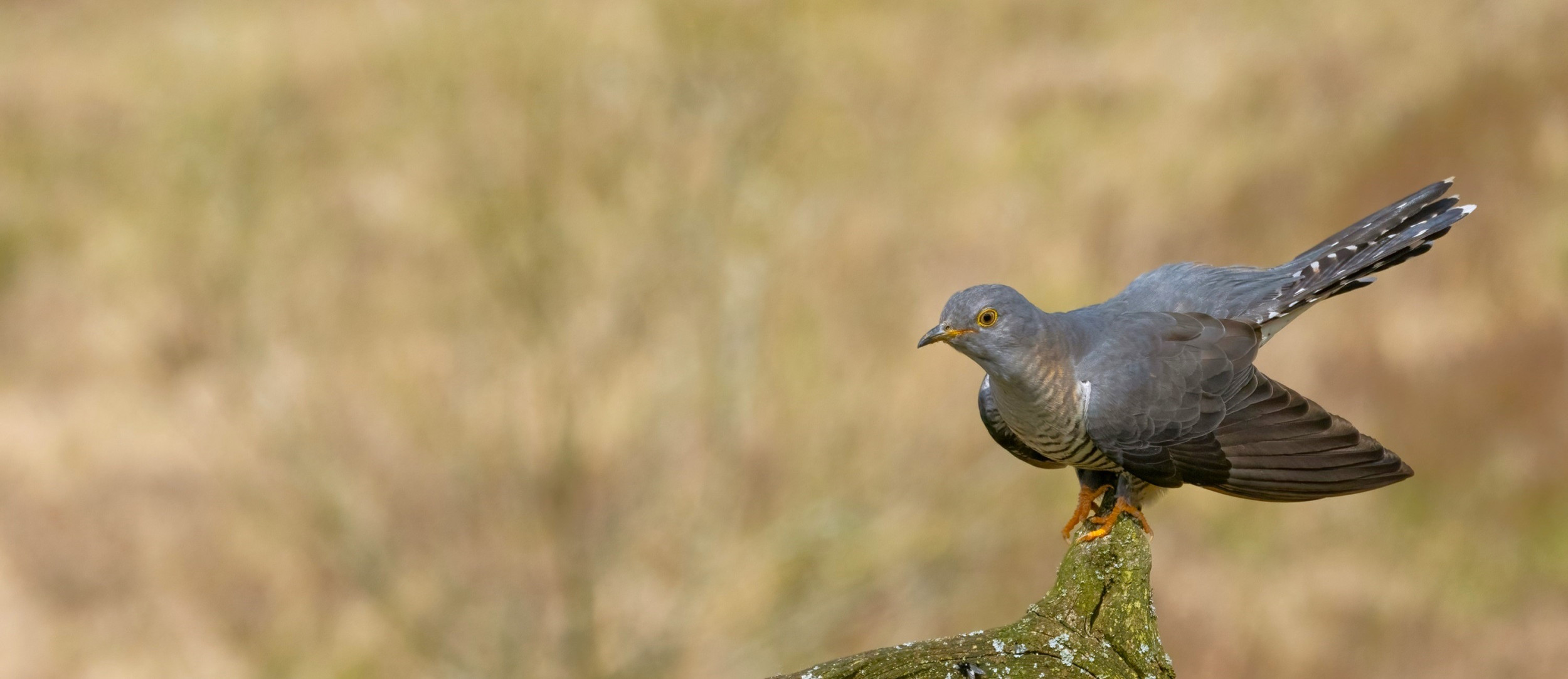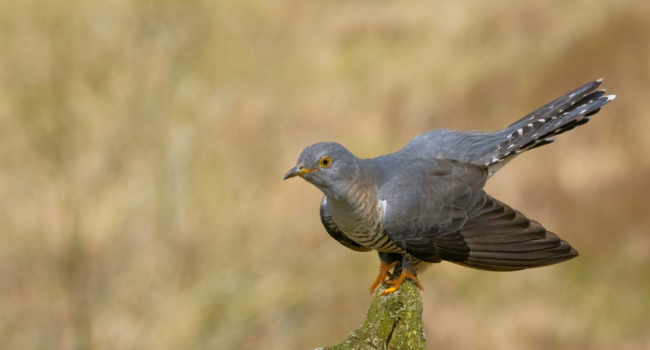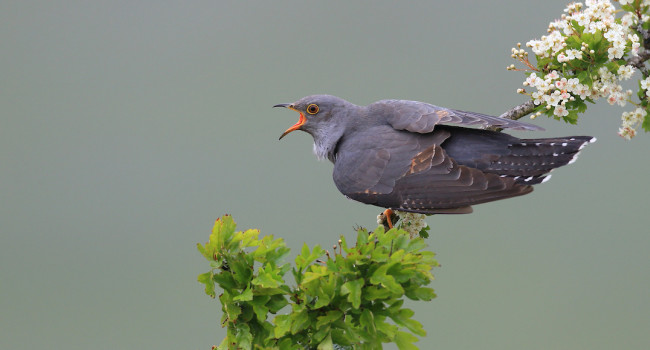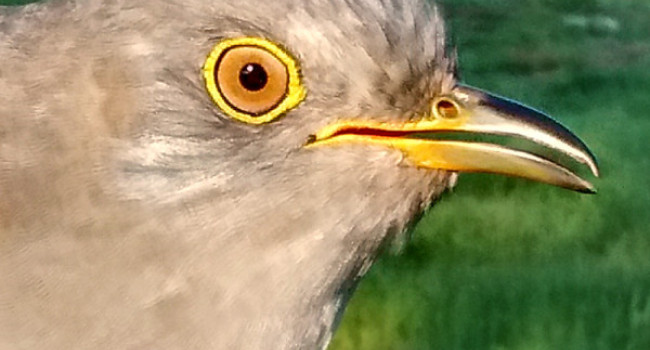Updates from our Cuckoos
Read the latest updates from our Cuckoos on their epic migration between the UK and tropical Africa, or track their movements in real-time on our Cuckoo migration map.
- If you enjoy these updates, please consider sponsoring a Cuckoo. Sponsors receive special updates about their chosen Cuckoo in the Cuckoo e-newsletter.
Awaiting transmission from Lyster shortly
Clement in Western Nigeria
One week after apparently settling in Burkina Faso, Clement had been on the move again and popped up in Togo! On Friday 19 August we received a series of positions for him just inside the extreme north of Togo, close to the border with Benin. By yesterday evening (Sunday 21 August), however, he had continued his journey to the east and was in western Nigeria, having travelled 500km (312 miles) ESE since Friday and 1025km (640 miles) almost due east since Wednesday.
Clement is now our most southerly Cuckoo, having reached 9.5 degrees N. His rapid easterly movement over the past two weeks mean that the four Cuckoos that have crossed the Sahara are now separated by about 1,500km, compared to the 3,500km soon after they had crossed the desert. It is fascinating that they have taken quite different routes to end up in very similar positions!
Chris stays still
No movement from Kasper
Lyster stops over in North Africa
Lyster is still on the coast of Morocco 20km from Casablanca. A series of locations received between Saturday morning (13 August) and 18 August showed he has been stopping over in an area centred on some artificial pools just outside the town of Had Soualem. He has now been there for over a week and is the first of our Cuckoos to have undertaken a stop-over in North Africa.
Martin stays put
Martin remains on the edge of the Chari River floodplain and we last heard from him on the morning on Thursday 18th August. After the birds had crossed the Sahara we expected them to rest up for a while and Martin has obviously found a good place as he has been in this region since 26 July.
Clement settles in Burkina Faso
Clement has continued making his way east. On Friday morning (12 August) he had reached southern Burkina Faso and was 30km ESE of Bobo-Dioulasso. He was still at the same location at midday on Wednesday (17 August). This is the first British Cuckoo to be recorded in Burkina Faso and he is in an area of scattered bushes near the village of Houet (see the picture here taken only 200m from our last fix!).
Since 2009, BTO has been working on migrant birds in Burkina Faso and Ghana as part of its Out of Africa project with RSPB and the two BirdLife International partners, the Ghana Wildlife Society and Naturama. BTO research has shown that migrants wintering in the humid zones of West Africa are in rapid decline. Our field project, spanning habitats from the arid Sahel in Burkina Faso to the humid rainforests in Ghana, is looking to understand the wintering and stop-over ecology of migrants and how changes in land use and climate are impacting their populations.
The migrant team works closely with partners in Burkina Faso and Ghana. More information and news from the project can be found at www.migrantbirdsinafrica.blogspot.com.
Chris still in Chad
Chris remains in the same area, about 170km (106 miles) north of the town of Sarh in southern Chad.
Kasper unmoved
On Tuesday afternoon (9 August), Kasper was still in the Bayan Dutsin Forest Reserve area.
Lyster in Morocco!
We were expecting another update from Lyster’s tag first thing this morning. In fact, however, his tag has deviated from its designated transmission cycle for some reason (it could have been re-set by a magnetic field such as that from overhead power-lines), and we received updates for him yesterday afternoon (10 August). He was close to the Atlantic Coast of Morocco, about 20km (12 miles) SW of Casablanca. His route appears to have taken him directly across the Straits of Gibraltar, although of course we do not know precisely what route he took between his current and previous locations whilst his tag was not transmitting. The last message we received was at 2240hrs when he was still in the same place, so he does not appear to have started his desert crossing last night.
Lyster is the second Cuckoo, following Clement, to have taken the unexpected south-western route into Africa. Fascinatingly, he has taken an even more westerly route than his predecessor, having gone around the northern side of the Atlas Mountains and along the Atlantic Coast. There are many oases along the coast to the south of here and if he continues to take the coastal route, like we know many of our small migrants heading into West Africa, such as the Nightingale we tracked from Norfolk with a geolocator do, he will be minimising his desert crossing and the amount of inhospitable land he has to cross. This seems to make sense – what was more surprising to us was that the likes of Kasper, Clement and Chris crossed the desert at or close to its widest point. Mike Beer, who has driven through many of these areas, reports that the Hoggar and Tibesti areas, that were included in the parts of the Sahara these birds traversed, are in fact not as inhospitable as the sand deserts around them, and in places there may even be small pools and dew points with tiny bushes.






Share this page